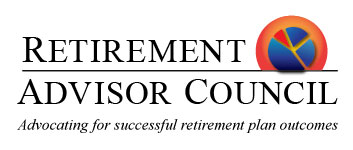
The SECURE Act of 2019 has spurred even greater interest in Multiple Employer Plans (MEP), and created new arrangements such as Pooled Employer Plans (PEP), and Groups of Plans (GOP). This popularity has the potential to alter the structure of the Retirement Plans landscape and to transform plan advisor practices.
For advisor teams, the emergence of PEPs presents both a threat and an opportunity. At a recent meeting of the Retirement Advisor Council, Michael Rhim of PRM Consulting, Mark Olsen of PlanPilot, Nichole Labbott of Sageview Advisory Group, and Terry Power shared their perspective. Council members Scott Schlappi and Paula Hendrickson moderated the session.
The SECURE Act stated a specific goal of enhancing the availability of defined contribution retirement plans among small employers. This is integral to the intention of providing access to 401(k) plans for those Americans who can’t participate in such a plan today. However, benefits extend to all employers, not just small business.
PEPs are of particular benefit to current plan sponsors with 100 to 500 employees. Indeed, upon joining a PEP, these employers will no longer need to file a Form 5500 or have an annual plan audit for their own plan. They will also limit their fiduciary responsibility to the selection and monitoring the Pooled Plan Provider (PPP). No longer will they be liable for the selection and monitoring of investment options, or for plan administration.
The benefits of PEPs and other pooled arrangements extend to employers of all sizes and in all industries. This gives plan advisors the opportunity to discuss the characteristics of these new options with current clients, even if (or maybe especially if) the client is not a good prospect for these new options. For example, employers with a strong preference for a custom retirement plan solution and sufficient scale to negotiate preferred services from their recordkeeping service provider wouldn’t be particularly good candidates for a PEP. However, these employers may question the value of their current advisor relationship if they learn about these arrangements from a competing advisor.
Terry Power warns advisors, “Be aware of what is happening in the market because you will get phone calls from clients who have been approached about it.” For this reason, Terry proposed that PEPs present an opportunity for advisors who enjoy educating plan sponsors. ”Educating clients gets us and keeps us involved in the discussion even if it is not the best solution for the client.” Mark Olsen added.
Scott Schlappi pointed out that discussing the practice’s posture regarding PEP plans highlights the difference between cost and value proposition. “If you hear it’s cheaper – it is because your fee is cheaper, it is not because the recordkeeper’s fee is cheaper.” And the situation may be even a bit more complicated. Mark Olsen pointed out that an advisor becoming involved with a PEP plan for multiple clients may actually lose revenue in the short term: “You may get a drop of revenue but some years down the road, it may create larger margins.”
Terry Power replied that “But there is good news too; your cost will go down as well.” For this reason, Michael Rhim recommended that advisors approach MEPs, PEPs and GOPs strategically, to gain the experience that puts them in a position to speak to PEPs with authority: “You have to be strategic about the way you approach the multiple plan market. How you want to structure pricing and service model, because if you don’t have the experience, it puts you behind other advisors who do.”
The strategic approach seems to be the right one. Becoming a PEP advisor doesn’t entail providing soup-to-nuts service to the PEP. There are several roles for an advisor to pick and choose when it comes to their typical involvement in a PEP plan as Mark Olsen pointed out:
Advisors can play different roles in relationship to the PEP. It may take a little introspection on the part of the advisor to determine the best approach. Where is the emphasis or sweet spot for the practice? Is it to be the 3(38) investment adviser, the educator, or a custom portfolio manager?
To select the role an advisor wishes to play with PEPs, Michael Rhim: suggested that advisors ponder three critical and revealing questions:
- Does it make sense for you to be an advisor for a MEP or a PEP?
- How do I deepen my relationships with my clients and discuss with them if a MEP or a PEP makes sense for them?
- What services can I offer to them?
Working in teams may be the best option for an advisor. Nichole Labbott pointed out that “Collaboration has to be in the spirit of what you provide. We are a 3(38) and we pride ourselves in consulting. You have the opportunity to partner with others. Plan sponsors like to hear confirmation from multiple parties (auditor, ERISA attorney, other professionals).” Working in a team with other professionals adds credibility to the services that you provide.
While many plans will have a geographic or regional component in nature, Terry Power suggests that advisors deciding to get involved with PEPs look at their entire block of business and ponder if it makes good sense to set up a proprietary PEP for their client base. Group of Plans (GOPs) will start in 2022. Advisors can create a group of plans that share the same investment trust. For example, they could create a group of plans consisting of clients of a given ERISA attorney. A new frontier may be on the horizon. Advisors will need to educate themselves on what makes the most sense for them and their practice overall. Meanwhile, their clients will keep them on their competitive toes in the ever-changing retirement industry. Is it PEPs, MEPS, GOPs or not?







































